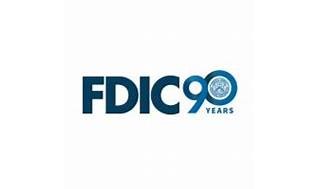
ALLL Methodology Validation and ALLL Methodology Refinement
A Brief Review of Allowance for Loan and Lease Losses (ALLL)
Originally known as “the reserve for bad debts,” Allowance for Loan and Lease Losses (ALLL) is the reserve established by financial institutions to reflect the estimated credit losses within their portfolio of loans and leases. These estimates of uncollected amounts, or “impaired loans,” represent the net charge-offs that are likely to be realized against an institution’s operating income as of the evaluation date (generally, the quarterly balance sheet date).
According to the Federal Reserve, the ALLL should be included on the balance sheet as a “contra-asset account.” This serves to reduce the total book value of a bank’s loans and leases to the amount that it expects to collect.
ALLL estimates and the methodologies used for calculating them are subject to regulatory scrutiny by multiple federal agencies: the Federal Reserve Board (FRB); the Federal Deposit Insurance Corporation (FDIC); the Office of the Comptroller of the Currency (OCC); the National Credit Union Administration (NCUA); and the Office of Thrift Supervision (OTS). The regulatory requirement for ALLL reserves applies to banks and credit unions.
CEIS Review’s Allowance for Loan and Lease Losses (ALLL) Methodology Validation Process
CEIS regularly is engaged with Banks and Credit Unions to validate their existing loan loss reserve methodology. The process involves CEIS reviewing the existing loan loss reserve methodology for conformance to regulatory guidelines, reasonableness in establishing the reserve allocations, conformance with GAAP standards, and that the methodology is well documented in the Clients policies.
We analyze, test and validate the methodology underlying the specific and general allocations that are applied in the client’s periodic assessment of loan loss reserves.
CEIS analyzes the portfolio experience of the last three-to-ten years, including the migration of loan grades, loss experience, reliability of the loan grading system and changes in the portfolio mix. We also scrutinize trends in portfolio risk in view of concentrations such as large loan exposures, loan types, collateral types, industry and loan grades; delinquency and non-accrual trends, off balance sheet commitments, the loss experience of its “peers,” and other factors relevant to the client portfolio profile.
In today’s regulatory environment, Banks are typically expected to have their LLR methodology reviewed at least once every 12 months. Contact us today to learn more.
How is ALLL Calculated?
In the 2006 Interagency Policy Statement on ALLL, the agencies state that it “represents one of the most significant estimates in an institution’s financial statements and regulatory reports.” Institutions are directed to document their ALLL at the end of each quarter, “or more frequently if warranted.”
Because of its significance, an institution’s methodology for deriving its ALLL estimate is a critical area of focus in its safety and soundness exam.
The Interagency ALLL regulatory directive addresses the process and methodology for calculating loan and lease credit losses, stating “each institution has a responsibility for developing, maintaining, and documenting a comprehensive, systematic, and consistently applied process for determining the amounts of the ALLL and the provision for loan and lease losses (PLLL).”
The agencies’ statement further directs financial institutions to determine their ALLL in accordance with the methodology of the Generally Accepted Accounting Principles (GAAP), which are based on the latest accounting standards for financial reporting issued by the Federal Accounting Standards Board (FASB). Current GAAP which require institutions to use an “incurred loss” methodology for recognizing credit losses, that delays recognition until it is probable a loss has been incurred.
Loan Loss Reserve Methodology | ALLL Methodology Refinement
Depending on an organization’s needs, CEIS will work with its key management to either refine an existing Allowance Methodology or to create a new Allowance for Loan and Lease Losses methodology.
CEIS is regularly retained by institutions with portfolio’s ranging from $20B to $50MM to perform these studies.
In either scenario, CEIS will address relevant regulatory and GAAP requirements, incorporate industry best practices where appropriate, review trends in portfolio concentrations, analyze risk migration, historical losses when available, and take into consideration other matters relevant to portfolio characteristics. The development of the Loan Loss Reserve Methodology requires a thorough and comprehensive process to build the framework/format/model that can be periodically updated in accordance with regulatory and management requirements and industry best practices.
To learn more about our ALLL Methodology Validation, CECL Engagements and Refinement Service please contact us.





